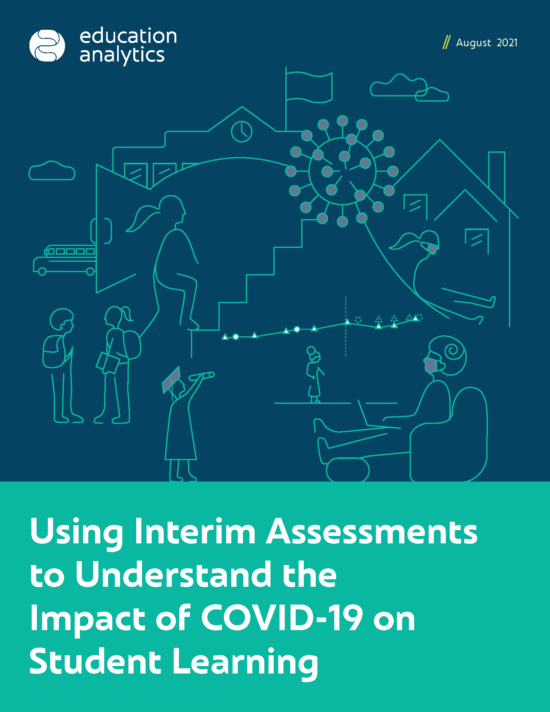Using Interim Assessments to Understand the Impact of COVID-19 on Student Learning
School closures and remote learning as a result of COVID-19 have made it more critical than ever to gather high-quality data that shows educators where students are in their learning. Research reveals that many students have learned less since the pandemic began–especially those who are historically underserved by the education system. We need urgent and sustained action to address disparities in student progress, particularly among students from low-income backgrounds, students of color, English language learners, and students with disabilities. Teachers will be working in classrooms with students of the widest range of learning levels, which calls for different approaches to meet students where they are–and to accelerate learning.
Through formative, diagnostic, interim, and summative assessments, there are a variety of ways to interview, observe, and measure student learning to quickly identify what skills and knowledge students have yet to master and how best to support their progress. Given the lack of summative assessments in spring 2020, and some concerns about high rates of opting out of state summative assessments in spring 2021, state education agencies and local education agencies can use high-quality interim assessments to measure learning change since the beginning of the pandemic, and compare that with learning changes that took place before COVID-19.
Although the use of interims represents a departure from typical practice for many state education agencies, these assessments are the best large-scale data source available that shows what students learned throughout the pandemic. We can use the data to analyze learning status and growth across different time periods, which tells us whether students learned more, less, or the same amount since the beginning of the pandemic as compared to typical levels for that same amount of time.
